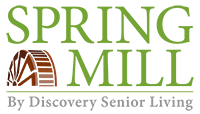Due to their very nature, retirement communities must always be prepared for emergency situations, whether it comes in the form of a stroke, heart attack or fall as well as natural disasters such as fire, blizzards or floods. Below are some ways in which personal care in Kenilworth, PA is provided.
Risk Assessment
The Centers for Medicare & Medicaid Services establishes a number of preparedness requirements which are designed to respond to both man-made and natural events in coordination with local, regional and federal systems. Most states throughout the country maintain similar emergency guidelines for retirement communities, and this includes Pennsylvania. The first step in preparedness is developing a risk assessment which should be based on:
- The hazards which are specific to a given geographical area
- Loss of a portion or all of the community
- Communications interruption resulting from cyber attacks
- Equipment or power failures
There must be a plan in place for communication among community team members in the event any of the previously described scenarios occur.
Communications Planning
During emergencies, communications must be properly coordinated throughout the community and with local medical care providers. Additionally, most states have laws that retirement associations must adhere to. To that end, each team member should receive training that must be renewed yearly and updated whenever possible.
Minimizing Exposure during Viral Outbreaks
The recent coronavirus pandemic has reinforced the importance of advanced preparation on the part of retirement centers. Since aging adults are at much greater risk of catching and succumbing to such microorganisms, strict protocols must be maintained to avoid the illness spreading. Examples of such measures include:
- Restricting visitation from friends and family members
- The donning of protective equipment by personnel
- Extra infection control and cleaning practices
- Additional resident health monitoring
- Reducing group activity size to minimize the likelihood of contagion
- Screening suppliers and visitors for risk level
- Collaborating with medical care professionals to address specific needs
Protection against Fire and Natural Disasters
Whether the senior living community consists of cottages, single family units or apartments, they must always be in compliance with local and state fire codes. Ideally, the building and domiciles should be constructed with materials that are fire retardant, and they must also adhere to Occupational Safety and Health Administration requirements involving fire extinguishers, inferno safety plans and escape routes.
Depending on the nature of the disaster, residents might be required to shelter within place or evacuate. Retirement communities should have contingency plans for both scenarios, which includes transportation along with pre-arranged destinations which residents can be relocated to if necessary. Other important measures include obtaining storable water, food, backup generators and emergency medical supplies.
Strokes, Heart Attacks and Falls
Individual risks to senior living community members include strokes, heart attacks and falls. The goal during such emergencies is to reach the residents as quickly as possible so they can be tended to until help arrives. Some associations install monitoring devices on residents which can send out a distress signal in the event they have an emergency.







